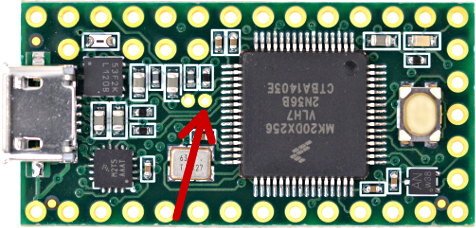evgenymagata
Member
Hi,
i bought a cheap DS3231 i2c module and realized it also has a 32khz output. Can i use that instead of a quarz to make the internal RTC of the teensy accurate, if so, can i wire it directly as a replacement for the quarz?
If not, what is good practice to make the teensy accurate using the DS3231 (instead of constant i2c readout and drift checks / reclocking?)
cheers,
e.
i bought a cheap DS3231 i2c module and realized it also has a 32khz output. Can i use that instead of a quarz to make the internal RTC of the teensy accurate, if so, can i wire it directly as a replacement for the quarz?
If not, what is good practice to make the teensy accurate using the DS3231 (instead of constant i2c readout and drift checks / reclocking?)
cheers,
e.


